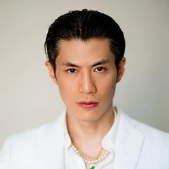In the realm of alternative medicine, Rife Frequency therapy has emerged as a subject of both fascination and skepticism. As technology advances and research in this field expands, it is imperative to consider what the future holds for Rife Therapy. This article aims to provide an impartial analysis of the factors influencing Rife Frequency, examining the tradeoffs involved in balancing various elements, and exploring the difficulties connected with different approaches.
Understanding Rife Frequency
To comprehend the future of Rife Therapy, it is crucial to first grasp the fundamentals of Rife Frequency. Developed by Royal Raymond Rife, this therapy is based on the principle that every organism has a unique resonant frequency. By applying specific frequencies, it is theorized that harmful pathogens can be neutralized, potentially leading to therapeutic benefits.
Technological Advancements
One of the primary drivers shaping the future of Rife Therapy is technological progress. With the advent of more sophisticated equipment and software, practitioners now have access to a wider range of frequencies and more precise targeting capabilities. This allows for a more nuanced and potentially effective approach to treatment.
Clinical Validation and Research
A significant factor influencing the future of Rife Therapy is the ongoing research and clinical validation efforts. As the scientific community continues to explore the potential benefits and limitations of Rife Frequency therapy, we may witness a shift in the perception and acceptance of this alternative approach within the broader medical community.
Integration with Conventional Medicine
Balancing the integration of Rife Therapy with conventional medicine presents a critical tradeoff. While some practitioners advocate for a holistic approach that incorporates both alternative and mainstream treatments, others may be more cautious due to the need for rigorous scientific validation and standardized protocols.
Patient Accessibility and Affordability
Ensuring that Rife Therapy remains accessible to a diverse patient population is a paramount concern. As this therapy evolves, efforts to develop cost-effective technologies and treatment protocols will be crucial in expanding its reach and impact.
Regulatory and Ethical Considerations
Navigating the regulatory landscape and adhering to ethical standards are fundamental challenges for the future of Rife Therapy. Establishing clear guidelines for practitioners and ensuring patient safety are imperative steps in legitimizing and standardizing this form of treatment.
Conclusion: A Balanced Perspective
As we look to the future of Rife Therapy, it is essential to maintain a balanced perspective. While advancements in technology and ongoing research hold promise, a cautious approach that prioritizes patient safety and evidence-based practice is paramount. By carefully weighing these influencing factors, the future of Rife Therapy holds potential for both innovation and integration within the broader healthcare landscape.

David Wong, also known as “The Qi Master,” is a successful entrepreneur and author who specializes in health, wellness, and Qi Energy. As the creator of Qi Life, he has developed groundbreaking frequency-based technologies that effectively improve health and quality of life. His journey began with self-healing an incurable digestive disease using frequency and energy devices, and his vision is to make physical and mental wellness accessible to all, without the need for invasive procedures or medication. Learn More >>>